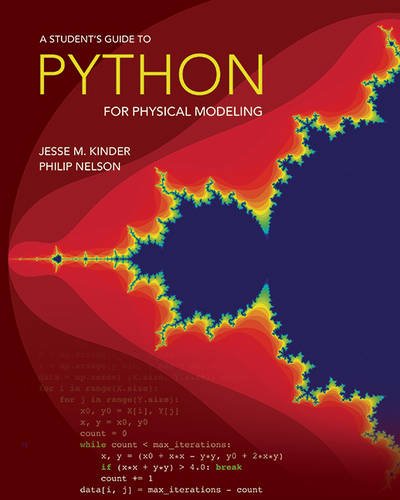Python is a computer programming language that is rapidly gaining popularity throughout the sciences. A Student's Guide to Python for Physical Modeling aims to help you, the student, teach yourself enough of the Python programming language to get started with physical modeling. You will learn how to install an open-source Python programming environment and use it to accomplish many common scientific computing tasks: importing, exporting, and visualizing data; numerical analysis; and simulation. No prior programming experience is assumed.
This tutorial focuses on fundamentals and introduces a wide range of useful techniques, including:
- Basic Python programming and scripting
- Numerical arrays
- Two- and three-dimensional graphics
- Monte Carlo simulations
- Numerical methods, including solving ordinary differential equations
- Image processing
- Animation
Numerous code samples and exercises--with solutions--illustrate new ideas as they are introduced. Web-based resources also accompany this guide and include code samples, data sets, and more.
Jesse M. Kinder is assistant professor of physics at the Oregon Institute of Technology. Philip Nelson is professor of physics at the University of Pennsylvania. He is the author of Biological Physics and Physical Models of Living Systems.
